Sapa Airport, also known as Lào Cai Airport, is a significant upcoming project situated approximately 35 km south of Sapa in the province of Lào Cai, Vietnam. This military/civil airport is poised to play a pivotal role in the region’s development, connecting communities and fostering economic growth.
Table of Contents
ToggleImportance of Sapa Airport
The realization of Sapa Airport marks a momentous milestone for the entire region, heralding a new era of connectivity and development. Situated in the province of Lào Cai, Vietnam, approximately 35 km south of Sapa, this airport is not merely a construction project; it is a catalyst for profound positive changes that will reverberate through the local community and beyond.
Serving as a Transportation Nexus
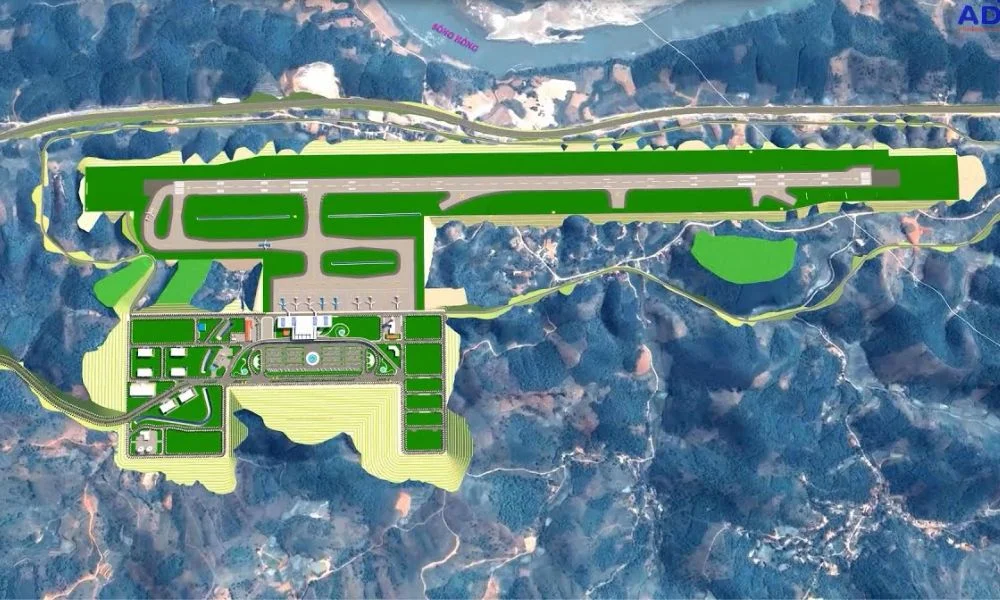
At its core, Sapa Airport is destined to emerge as a pivotal transportation hub. The strategic location of the airport is carefully chosen to serve as a gateway, seamlessly connecting Sapa and the surrounding areas. The ease of access it will provide is set to redefine travel dynamics in the region, making it more convenient for both locals and visitors alike.
Fueling Economic Growth
The enhanced connectivity facilitated by Sapa Airport is not just a matter of convenience; it is a cornerstone for economic growth. The airport’s presence is anticipated to stimulate commerce and trade, providing businesses with improved accessibility to markets. As a result, a ripple effect of economic prosperity is expected, creating a vibrant economic landscape for the local community.
Tourism Flourishing on New Heights
Sapa, with its breathtaking landscapes and rich cultural tapestry, has long been a favored destination for travelers seeking tranquility and natural beauty. The introduction of Sapa Airport is poised to elevate the region’s appeal further. Tourists can now seamlessly arrive, immersing themselves in the wonders of Sapa without the constraints of complicated travel logistics. This newfound accessibility is a boon for the local tourism industry, promising increased footfall and prolonged stays.
Fostering Overall Development
Beyond the immediate economic benefits, Sapa Airport is a cornerstone of overall development for the region. The improved connectivity ensures that educational and healthcare facilities become more accessible. This, in turn, contributes to the holistic development of the community, fostering an environment where residents can thrive socially, economically, and culturally.
Environmental Considerations
While celebrating progress, it is imperative to acknowledge the commitment of Sapa Airport to environmental sustainability. The project incorporates measures to minimize its ecological footprint, ensuring that growth occurs hand-in-hand with responsible environmental practices. This dedication to balancing progress with environmental responsibility reflects a commitment to the well-being of both the community and the natural surroundings.
In essence, Sapa Airport is not merely an infrastructure project; it is a beacon of positive change for the region. As it takes flight, the airport promises to reshape the landscape, creating a dynamic and interconnected community that thrives on enhanced accessibility, economic prosperity, and sustainable development. The importance of Sapa Airport transcends its physical structure; it symbolizes the promise of a brighter, more connected future for all those it serves.
Project Details: Sapa Airport’s Ambitious Vision and Collaborative Investment
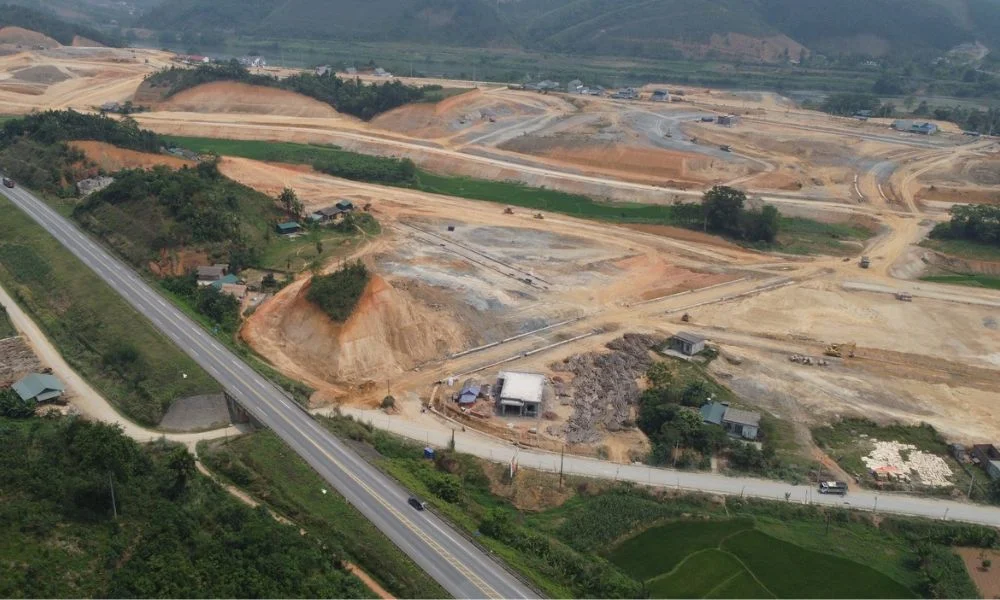
The scope and scale of Sapa Airport’s ambitious project have captured widespread attention, underlining its significance in regional development. With a total investment surpassing VND6,948 billion, equivalent to approximately US$305 million, this venture stands as a testament to the commitment toward creating a transformative transportation hub in the province of Lào Cai, Vietnam.
Financial Commitment and Scale
The financial commitment to Sapa Airport underscores the gravity of its vision. Exceeding VND6,948 billion, this substantial investment is a testament to the belief in the project’s potential to revolutionize travel and spur economic growth. The financial scale of the project reflects a dedication to providing the necessary resources for the airport’s successful realization.
Feasibility Study Report Approval
A pivotal moment in the journey of Sapa Airport occurred on October 21, 2021, with the approval of the Feasibility Study Report by the Prime Minister. This milestone marked the official endorsement of the project’s viability and potential benefits. The comprehensive study, evaluating technical, financial, and environmental aspects, played a crucial role in securing the necessary approvals, instilling confidence in the venture.
Collaborative Investment Model
Sapa Airport embraces a forward-thinking approach to funding through a public-private partnership model. This strategic choice reflects a collaborative effort between the public and private sectors, aligning their interests in ensuring the success of the airport. The synergy between government initiatives and private enterprise expertise is anticipated to bring efficiency, innovation, and sustainability to the project.
Ensuring Success through Collaboration
The selection of a public-private partnership is not merely a financial arrangement; it is a strategic decision aimed at leveraging the strengths of both sectors. This collaborative model ensures that Sapa Airport benefits from the efficiency and innovation inherent in private enterprise while maintaining the public sector’s commitment to public welfare and responsible development.
In summary, the project details of Sapa Airport reveal a significant financial commitment, the crucial approval of the Feasibility Study Report, and a forward-looking investment model. The venture’s success is not only measured in monetary terms but also in the collaborative spirit that underpins its development. As the project progresses, the synergy between public and private stakeholders is expected to propel Sapa Airport toward becoming a transformative and successful transportation hub in the heart of Vietnam.
Technical Specifications: Elevating Standards at Sapa Airport
Sapa Airport’s commitment to excellence is reflected in its meticulous adherence to the 4C standards established by the International Civil Aviation Organization (ICAO). This adherence ensures that the airport not only meets but exceeds international benchmarks, setting a new standard for safety, efficiency, and passenger experience in the heart of Vietnam.
Alignment with International Civil Aviation Organization Standards
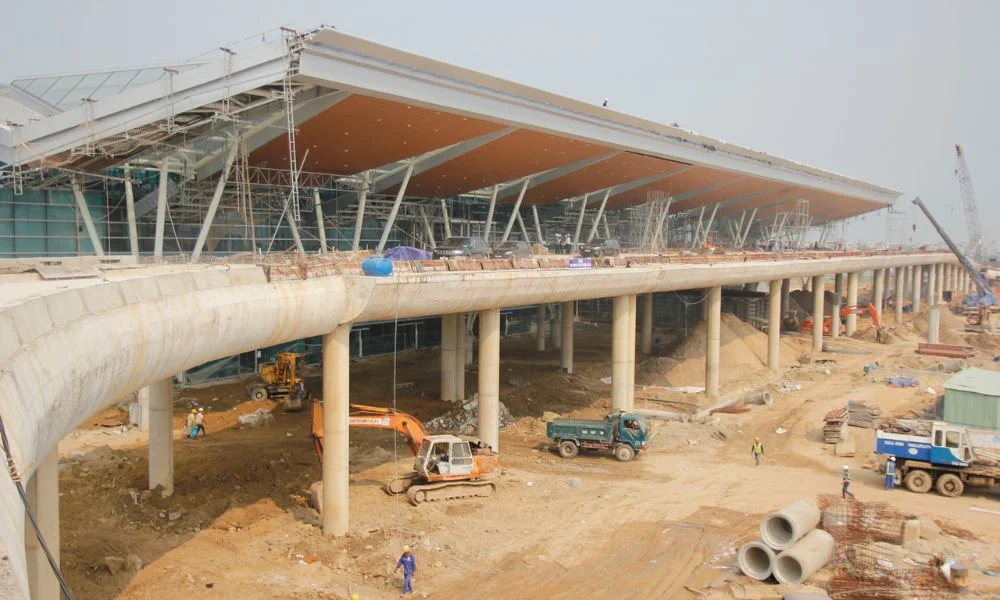
The decision to design Sapa Airport in accordance with the 4C standards of the ICAO signifies a dedication to global best practices in aviation. These standards encompass areas such as runway length, taxiway design, safety protocols, and overall infrastructure layout. By aligning with these rigorous criteria, Sapa Airport positions itself as a facility that prioritizes the safety and well-being of passengers and aircraft.
Ensuring Safety and Efficiency
The 4C standards established by the ICAO are crafted to ensure the highest levels of safety and operational efficiency at airports. Sapa Airport’s commitment to these standards underscores its dedication to providing a secure environment for both domestic and international travelers. Rigorous safety protocols and efficient operational practices are embedded in the airport’s design, fostering an environment where passengers can travel with confidence.
Capacity to Accommodate Growth
Sapa Airport is poised to become a major gateway to the region, boasting a robust capacity to handle 1.5 million passengers annually. This impressive capacity not only anticipates the current travel demands but also positions the airport for future growth and increased connectivity. The design accounts for a seamless flow of passengers, luggage, and aircraft movements, ensuring a smooth and enjoyable travel experience.
Gateway to the Region
As Sapa Airport aligns with international standards and prepares to handle a significant volume of passengers, it emerges as a vital gateway to the region. Beyond serving as a local transportation hub, the airport is positioned to connect the region to the global travel network. This not only facilitates tourism but also opens avenues for trade, business, and cultural exchange.
In conclusion, the technical specifications of Sapa Airport are not just a checklist of standards; they represent a commitment to excellence, safety, and future growth. As the airport takes shape, it stands ready to elevate the travel experience for all, positioning itself as a beacon of aviation excellence in Vietnam and beyond.
Location and Phases of Construction: Unveiling the Blueprint of Sapa Airport
Sapa Airport, a beacon of progress, is strategically positioned in the serene commune of Cam Cọn, nestled within the Bảo Yên District of Vietnam. Occupying a substantial expanse of 371 hectares, the airport’s location is chosen with precision, considering both functionality and environmental harmony.
An Idyllic Setting: Cam Cọn, Bảo Yên District
The choice of Cam Cọn as the airport’s location brings a perfect blend of accessibility and natural beauty. Surrounded by the tranquility of the commune and the charm of Bảo Yên District, Sapa Airport stands as a testament to harmonizing modern infrastructure with the picturesque landscapes of Vietnam.
Expansive Footprint: 371 Hectares of Possibilities

Sapa Airport doesn’t just occupy space; it embraces it. Covering a vast area of 371 hectares, the airport’s footprint is a canvas for possibilities. This expansive layout allows for the creation of state-of-the-art facilities, ensuring that every aspect of the traveler’s journey is considered and catered to with meticulous detail.
Phased Construction: A Thoughtful Approach to Development
The construction of Sapa Airport unfolds in two well-planned phases, each serving a specific purpose in the airport’s evolution. The inaugural phase kicks off in Q4/2021, signaling the commencement of a transformative journey. This phased approach is not just about building infrastructure; it’s a strategic move to ensure efficient resource utilization and a gradual yet substantial expansion of the airport’s capabilities.
Efficiency in Action
By adopting a phased construction approach, Sapa Airport optimizes the use of resources and time. This methodical progression allows for a focus on precision in each stage, ensuring that every component is constructed with the utmost attention to detail. As the first phase takes flight, it sets the groundwork for subsequent expansions, seamlessly integrating new capabilities as demand and requirements evolve.
Community Integration
The location in Cam Cọn isn’t just about physical space; it’s about being a part of a community. Sapa Airport actively engages with the local community, incorporating their input and addressing concerns. This collaborative approach ensures that the airport’s development aligns with the values and aspirations of the people it serves.
In summary, the location and phases of construction reveal more than just the physical aspects of Sapa Airport. They unveil a thoughtful strategy that blends modernity with nature, efficiency with community collaboration. As the airport takes shape in Cam Cọn, it becomes not just a transportation hub but a harmonious integration of progress into the heart of Vietnam.
Economic Impact: Sapa Airport’s Catalyst for Prosperity and Growth
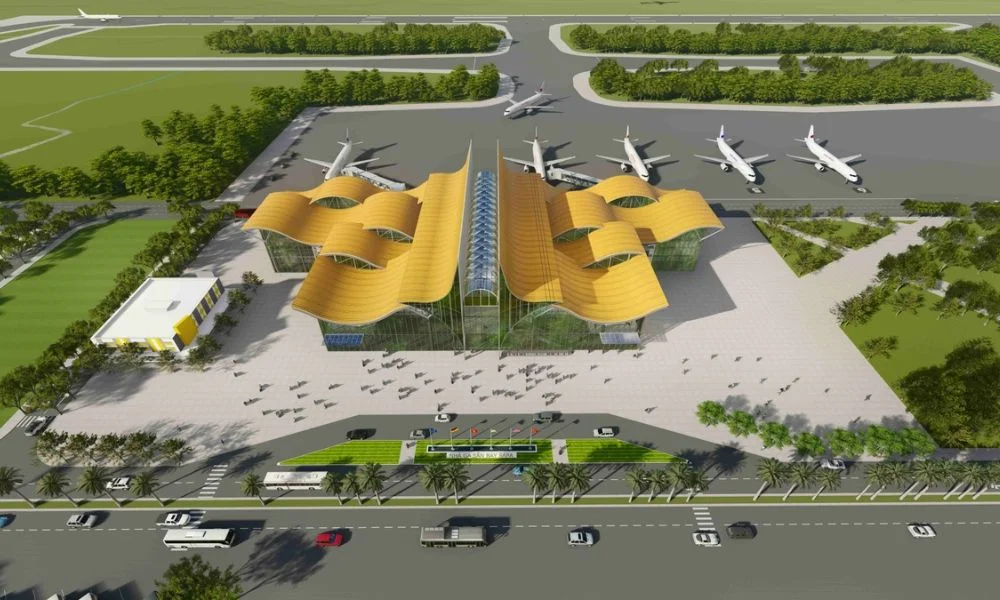
The impending completion of Sapa Airport heralds not just a new era in transportation but a transformative force for economic prosperity in the region. The positive economic impact of this strategic infrastructure project resonates far beyond its physical structure, promising a ripple effect that touches the lives of locals and businesses alike.
Boosting Tourism: A Gateway to Sapa’s Wonders
Sapa Airport is poised to become a gateway, unlocking the natural wonders and cultural richness of the region. With enhanced accessibility, the airport is set to attract a surge in tourism. Visitors, both domestic and international, can seamlessly explore the breathtaking landscapes and vibrant local culture, injecting a fresh vitality into the tourism sector.
Creating Employment Opportunities: Empowering the Local Workforce
The airport’s construction and subsequent operations will be a wellspring of employment opportunities for the local community. From skilled labor in construction to various roles within airport operations, Sapa Airport stands as a catalyst for job creation. This not only boosts household incomes but also empowers the workforce, contributing to the overall socio-economic well-being of the region.
Stimulating Local Businesses: A Flourishing Economic Ecosystem
As Sapa Airport becomes operational, local businesses are poised to thrive. The influx of tourists and increased accessibility create a demand for services and products. From hospitality establishments to local artisans, businesses will experience a surge in activity, fostering a flourishing economic ecosystem that extends beyond the airport’s immediate vicinity.
Contributing to Economic Growth: A Regional Powerhouse
The economic impact of Sapa Airport extends beyond immediate sectors, positioning itself as a regional economic powerhouse. The airport’s ability to facilitate trade, commerce, and cultural exchange ensures that the entire region benefits from heightened connectivity. This positive spillover effect contributes to sustained economic growth, uplifting the standard of living for the communities it serves.
Key Factor in Regional Significance
Sapa Airport’s contribution to economic growth is not a mere byproduct; it is a key factor in defining its significance for the entire region. The airport’s role in driving economic prosperity positions it as a critical piece in the region’s development puzzle, fostering a sustainable environment for businesses, communities, and individuals to thrive.
In conclusion, Sapa Airport’s economic impact is poised to be a dynamic force, influencing tourism, creating job opportunities, and stimulating local businesses. As the airport becomes operational, its ripple effect will be felt across the region, solidifying its role as a catalyst for economic prosperity and growth in the heart of Vietnam.
Public-Private Partnership: A Collaborative Triumph for Sapa Airport’s Success
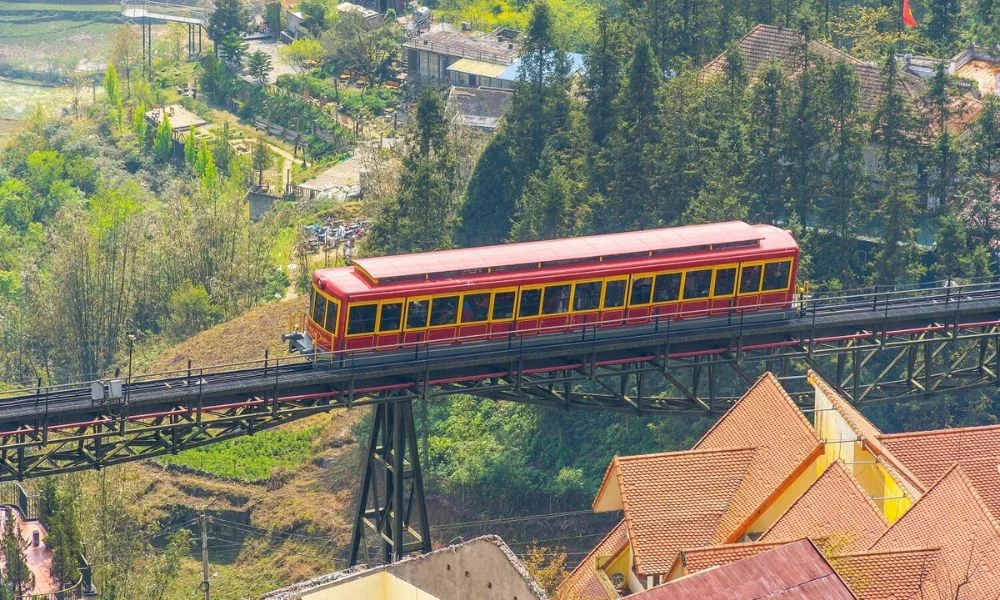
The development of Sapa Airport epitomizes a forward-thinking and collaborative approach through the active involvement of the private sector. This strategic alliance, known as a public-private partnership (PPP), is a testament to the belief that when public and private entities join forces, the outcome is not just a project but a triumph of expertise, innovation, and sustained success.
Collaborative Approach to Development
Sapa Airport stands as a beacon of collaboration, bringing together the strengths of both the public and private sectors. The collaborative approach is more than a financial arrangement; it is a synergy of ideas, resources, and shared responsibility. This collaborative spirit ensures that the airport’s development is not only well-funded but also strategically guided by diverse perspectives and expertise.
Augmented Financial Resources
The financial commitment from the private sector injects a considerable boost to the project’s funding. This infusion of capital goes beyond meeting immediate construction needs; it lays the groundwork for long-term sustainability. The financial synergy ensures that Sapa Airport is not merely a transient project but a lasting asset for the community and the region.
Leveraging Private Expertise
The private sector’s involvement is not solely about financial contributions; it taps into the wealth of expertise that private entities bring to the table. From project management to operational efficiency, private entities often possess specialized knowledge that is invaluable in navigating complex infrastructure projects. This collaborative sharing of knowledge ensures that Sapa Airport is developed and operated at the highest standards.
Ensuring Success and Sustainability
The partnership between the public and private sectors is a holistic strategy aimed at ensuring the success and sustainability of Sapa Airport. This symbiotic relationship minimizes risks, optimizes efficiency, and fosters a culture of innovation. The combination of public accountability and private efficiency creates an environment where the airport is not only successfully developed but also poised for long-term success.
Strategic Decision for Long-Term Benefits
The choice of a public-private partnership for Sapa Airport is strategic, considering the long-term benefits it brings. Beyond the immediate advantages of financial backing and expertise, this model ensures that the airport remains adaptable to changing needs and industry trends. The partnership, therefore, becomes a cornerstone for a resilient and future-proofed infrastructure.
In conclusion, the public-private partnership for Sapa Airport is more than a collaboration; it is a dynamic alliance that enhances the project’s financial strength, leverages private expertise, and ensures its success and sustainability. As Sapa Airport takes shape, this collaborative triumph becomes a blueprint for effective and forward-looking development in the realm of aviation infrastructure.
Environmental Considerations: Sapa Airport’s Commitment to Sustainable Progress
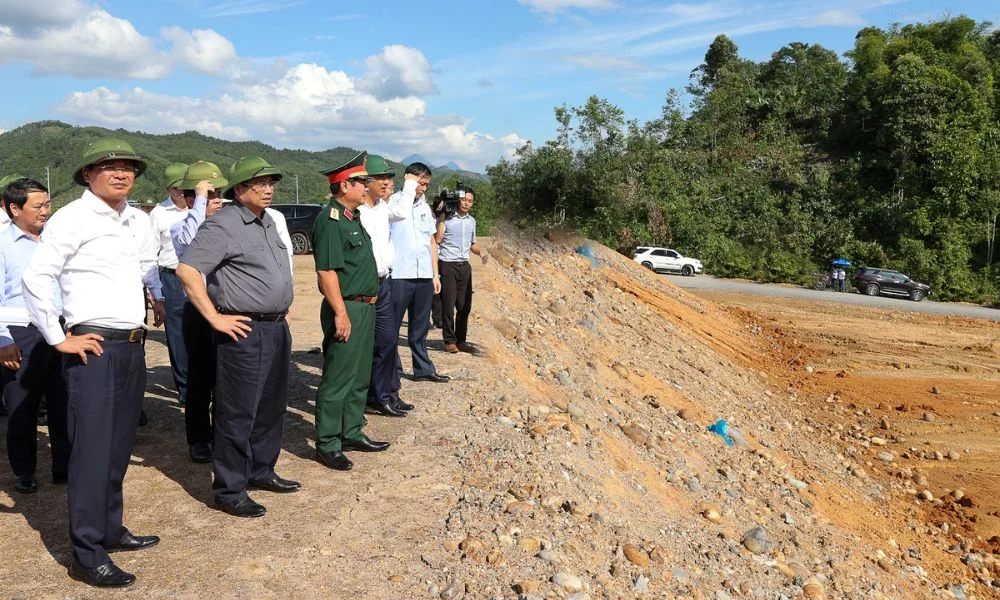
As Sapa Airport embarks on its journey of progress, a resolute commitment to sustainable practices takes center stage. The project is not merely about constructing an airport; it is a conscientious effort to harmonize development with environmental responsibility. Environmental considerations are not an afterthought but a foundational principle guiding the entire project, with dedicated measures in place to mitigate ecological impact and champion sustainable practices.
Adopting Sustainable Practices
Sapa Airport stands as a beacon for sustainable development, embodying a commitment to practices that minimize environmental impact. From the initial planning stages to the airport’s operational lifespan, every aspect is scrutinized through an environmentally conscious lens. The adoption of sustainable practices is not just a choice; it’s a fundamental ethos embedded in the project’s DNA.
Mitigating Ecological Impact
Aware of the potential ecological impact of large-scale infrastructure projects, Sapa Airport takes proactive measures to mitigate any adverse effects. This includes a comprehensive assessment of the local ecosystem, identifying and preserving areas of ecological significance. The airport’s development is designed to coexist harmoniously with the surrounding environment, minimizing disruption to natural habitats.
Responsible Land Use
Sapa Airport recognizes the importance of responsible land use as a cornerstone of sustainable development. The project’s planners meticulously assess and allocate land, ensuring that the airport’s footprint is optimized without compromising the integrity of the local environment. This approach ensures that the airport integrates seamlessly into the landscape, preserving the natural balance.
Eco-Friendly Construction Practices
The construction phase of Sapa Airport is a showcase of eco-friendly practices. Sustainable construction materials, energy-efficient technologies, and waste reduction strategies are integral components of the building process. This commitment to eco-friendly construction not only minimizes the immediate impact but also sets a precedent for responsible development in the broader industry.
Continuous Monitoring and Improvement
Sapa Airport’s commitment to the environment extends beyond construction. Continuous monitoring mechanisms are in place to assess the environmental impact during operations. This proactive approach allows for real-time adjustments and improvements, ensuring that the airport remains at the forefront of sustainable aviation infrastructure.
In essence, Sapa Airport’s environmental considerations are not a token gesture but a core commitment woven into its very fabric. As the airport takes shape, it stands as a testament to the possibility of progress coexisting with environmental stewardship. Through its unwavering dedication to sustainability, Sapa Airport charts a course towards a future where development and environmental responsibility walk hand in hand.
Community Engagement: Sapa Airport’s Empathetic Connection with the Local Community
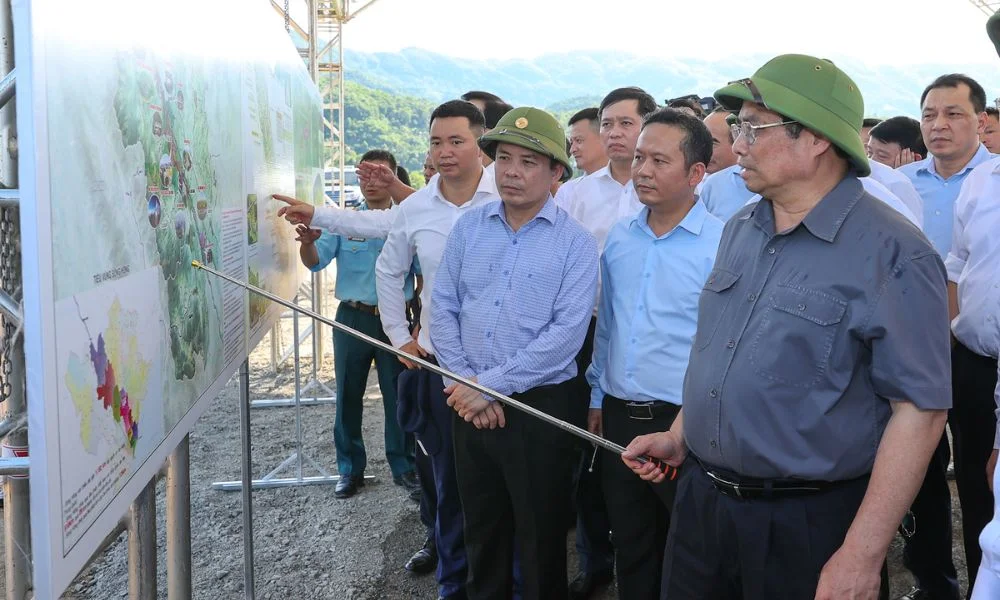
In the unfolding narrative of Sapa Airport’s development, the voices of the local community resonate as pivotal elements shaping the project’s success. Far from being a distant endeavor, the airport actively embraces community engagement, viewing it not only as a necessity but as a fundamental aspect that breathes life into the very essence of the project. Through a commitment to seeking input, addressing concerns, and aligning with the community’s needs and aspirations, Sapa Airport becomes more than infrastructure; it becomes a shared endeavor, reflecting the heartbeat of the people it serves.
Actively Seeking Input and Feedback
Sapa Airport stands as a testament to the belief that community involvement is not a formality but a genuine commitment. The project actively seeks input and feedback from the local community, recognizing that the people who call this region home hold invaluable insights. From public forums to surveys and one-on-one interactions, every effort is made to create a platform where community members feel heard and valued.
Addressing Concerns with Empathy
The concerns of the local community are not dismissed; they are acknowledged with empathy. Sapa Airport recognizes that open communication is vital to dispelling apprehensions. In addressing concerns, the project adopts a transparent and empathetic approach, ensuring that the community is well-informed about the various facets of the development. This fosters a sense of trust and collaboration.
Aligning with Community Needs and Aspirations
The development of Sapa Airport is a collaborative journey where the aspirations of the local community are not just considered but woven into the project’s fabric. The airport actively seeks to understand the community’s needs, aspirations, and cultural nuances, ensuring that the final outcome aligns harmoniously with the unique identity of the region. This approach goes beyond consultation; it reflects a genuine effort to integrate the community’s essence into the airport’s identity.
Creating a Shared Vision
Through robust community engagement, Sapa Airport doesn’t just build infrastructure; it creates a shared vision for the future. The collaborative effort ensures that the airport becomes an asset that the community can take pride in, one that reflects their values and contributes positively to their way of life. This shared vision strengthens the bonds between the project and its surroundings.
Continuous Dialogue for Sustainable Development
Community engagement is not a one-time affair; it’s a continuous dialogue. Sapa Airport recognizes the dynamic nature of community needs and aspirations and pledges to adapt and grow in response. The ongoing engagement ensures that the airport remains a dynamic and responsive entity, attuned to the evolving expectations and desires of the local community.
In conclusion, Sapa Airport’s commitment to community engagement transcends the conventional boundaries of infrastructure development. It transforms the project into a collaborative venture, where the voices of the local community echo in its every facet. As the airport progresses, it does so not in isolation but as a shared endeavor, embodying the collective spirit of the community it serves.
Challenges and Solutions: Navigating the Ambitious Trajectory of Sapa Airport
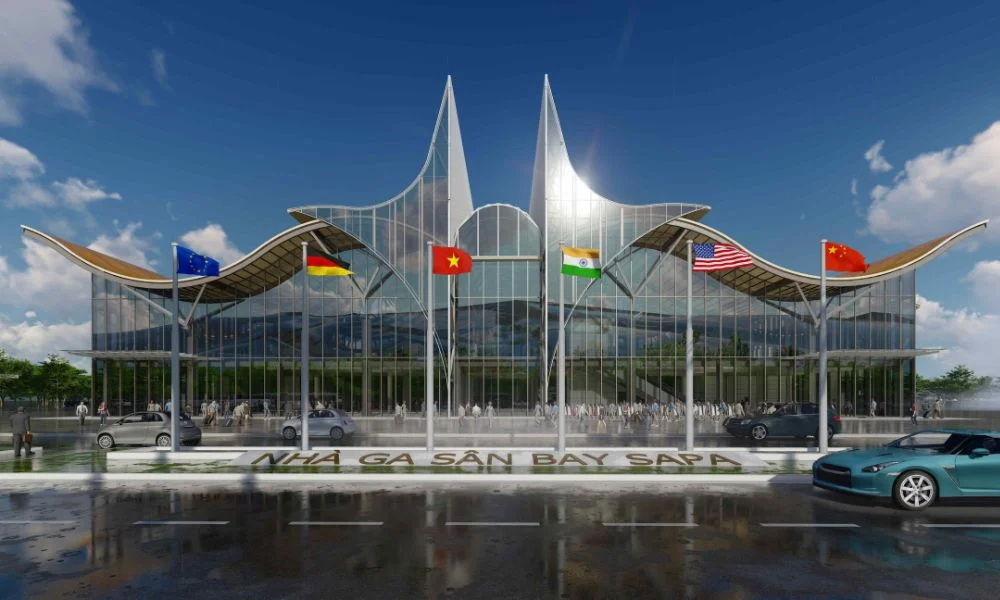
The journey of building Sapa Airport, though brimming with ambition, is not immune to challenges inherent in such transformative projects. Anticipating potential obstacles, the project adopts a proactive stance, embracing careful planning and innovative solutions. From logistical intricacies to the delicate balance between short-term goals and long-term sustainability, Sapa Airport addresses challenges head-on, transforming them into stepping stones rather than stumbling blocks.
Logistical Challenges: A Complex Landscape
One of the primary challenges facing Sapa Airport is navigating the intricate logistical landscape inherent in large-scale infrastructure projects. From the transportation of construction materials to the coordination of diverse construction activities, logistics pose a multifaceted puzzle. The project responds by deploying sophisticated logistical solutions, optimizing supply chains, and implementing advanced project management methodologies to ensure a seamless and efficient construction process.
Environmental Considerations: Sustaining Progress Responsibly
Balancing progress with environmental responsibility is a nuanced challenge that Sapa Airport actively confronts. The project recognizes that growth should not come at the expense of the environment. To address this, Sapa Airport has integrated sustainable practices, including eco-friendly construction methods, responsible land use, and ongoing monitoring for environmental impact. These measures exemplify a commitment to ensuring that progress is harmonized with ecological preservation.
Collaborative Decision-Making: Aligning Goals
The complexity of a project like Sapa Airport demands a delicate balance between short-term objectives and long-term sustainability. Collaborative decision-making becomes crucial in navigating this challenge. By fostering open communication channels and engaging stakeholders at every level, the project ensures that decisions align not only with immediate goals but also with the overarching vision of creating a lasting and sustainable transportation hub.
Financial Viability: Ensuring Resource Optimization
The ambitious scale of Sapa Airport necessitates a substantial financial investment. To ensure financial viability, the project employs careful financial planning and resource optimization strategies. The public-private partnership model, with its infusion of private sector resources, plays a pivotal role in addressing financial challenges. Through this collaborative effort, Sapa Airport aims not only to meet immediate funding requirements but also to create a robust financial foundation for sustained success.
Community Relations: Nurturing Trust
Building an airport is not just about constructing physical infrastructure; it’s about fostering a relationship with the local community. Challenges related to community relations are approached with empathy and openness. Sapa Airport actively engages with the community, seeking input, addressing concerns, and ensuring that the project is a collaborative venture rather than an imposition. This approach fosters trust and transforms potential challenges into opportunities for positive community impact.
In essence, challenges are viewed as inherent components of progress at Sapa Airport. Through careful planning, innovative solutions, and a commitment to collaboration, these challenges are not roadblocks but stepping stones toward realizing the ambitious vision of creating a transformative and sustainable transportation hub in the heart of Vietnam.
Future Prospects: Sapa Airport’s Path to Prosperity and Regional Transformation
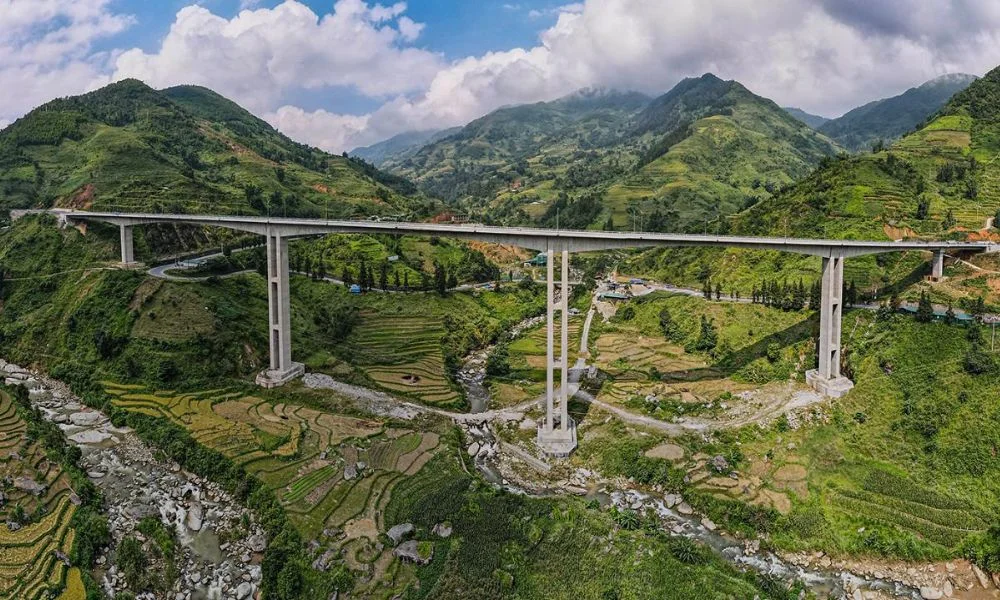
The journey of Sapa Airport, still in the throes of construction, holds a promise that extends far beyond the foundation and steel taking shape. As the airport charts its course toward completion and eventual operation, the future prospects for Sapa and the surrounding region shimmer with the potential for unprecedented growth, development, and prosperity.
Tourism Flourishing to New Heights
Sapa, with its enchanting landscapes and cultural richness, has long been a gem waiting to be discovered. Sapa Airport is the key to unlocking this treasure trove. As the airport becomes operational, the region is poised to experience a tourism boom. Travelers, drawn by the ease of accessibility, will flock to Sapa, immersing themselves in the natural wonders and cultural tapestry that define the region. This influx of visitors is not just an economic boost but a cultural exchange that enriches the community.
Trade and Commerce: A Regional Nexus
Beyond the beauty of tourism, Sapa Airport emerges as a regional nexus for trade and commerce. The enhanced connectivity facilitates the movement of goods and services, creating a bustling economic ecosystem around the airport. Local businesses, empowered by increased accessibility, find new markets and opportunities. Sapa, once a serene destination, transforms into a dynamic hub where commerce thrives and regional trade networks flourish.
Overall Connectivity: Linking Regions and Cultures
Sapa Airport’s role transcends mere transportation; it becomes a linchpin linking not only geographical regions but cultural spheres. The airport’s connectivity serves as a bridge, fostering collaboration, understanding, and exchange. People and ideas flow seamlessly, enriching the region’s cultural fabric and positioning Sapa as a global crossroads where diversity converges.
Sustainable Development as a Legacy
As Sapa Airport propels the region into a new era, it leaves behind a legacy of sustainable development. The environmentally conscious practices embedded in its construction and operations set a precedent for responsible growth. The region evolves not just economically but also ecologically, ensuring that progress is balanced with a commitment to preserving the natural beauty that makes Sapa unique.
Community Empowerment: A Thriving Socio-Economic Landscape
The airport’s future is intricately woven with the empowerment of the local community. Job opportunities created during construction continue to multiply as the airport operates. Local businesses, supported by increased demand, become vital contributors to the region’s economy. Education and healthcare, made more accessible through improved connectivity, empower individuals, fostering a thriving socio-economic landscape.
In conclusion, the future prospects for Sapa Airport are not just about aviation; they are about the transformation of a region. As the airport takes flight, it propels Sapa and its surroundings into a new era of prosperity, connectivity, and sustainable growth. The legacy it leaves is not just a physical infrastructure but a testament to the potential of strategic development in shaping the future of communities and regions.
Conclusion: Sapa Airport – Transforming Vision into Reality
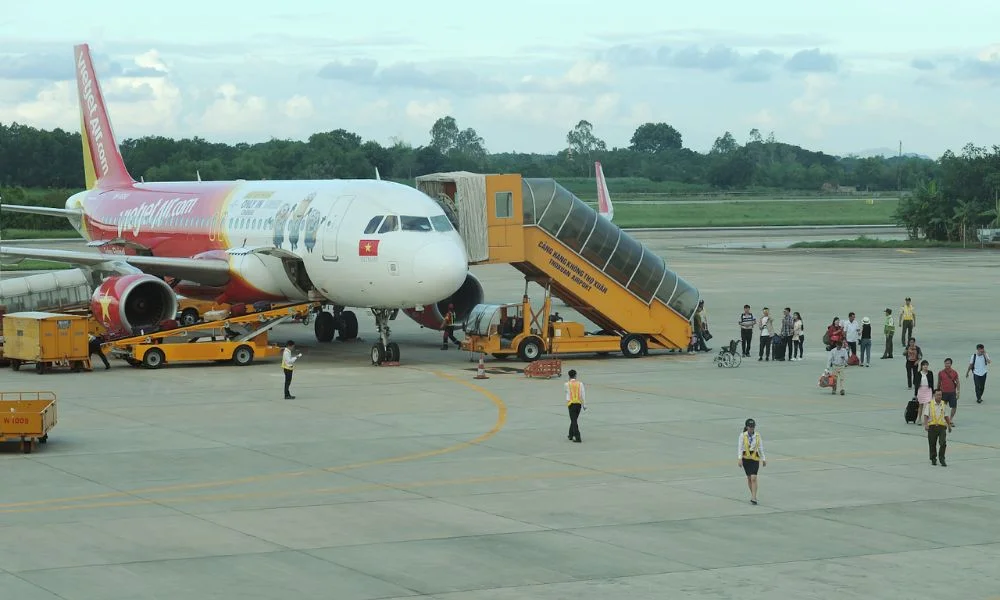
In the final contours of our exploration, Sapa Airport emerges not merely as an architectural feat but as a beacon illuminating the path towards regional development, economic prosperity, and seamless connectivity. Beyond the concrete and steel that will define its physical form, the airport encapsulates a grand vision that goes beyond the ordinary realms of transportation infrastructure.
Sculpting Regional Development
Sapa Airport is a testament to the belief that progress is not confined to urban centers but can be a force that transforms entire regions. Its strategic location, meticulous planning, and commitment to community engagement position it as a catalyst for the holistic development of Sapa and its surroundings. The airport becomes a dynamic nucleus, radiating growth, prosperity, and opportunity.
Economic Prosperity Takes Flight
The economic impact of Sapa Airport extends far beyond its runways. Its role as a gateway stimulates tourism, invigorates local businesses, and sparks regional commerce. As travelers arrive, they bring with them not just baggage but a wealth of possibilities, injecting vitality into the economic veins of the community. The airport’s success is not measured solely in passenger numbers but in the economic ripples that echo through the region.
Enhanced Connectivity, Strengthened Bonds
Connectivity is the lifeline of progress, and Sapa Airport emerges as a thread weaving communities, cultures, and regions together. Its strategic positioning transforms Sapa into a central hub, a meeting point for diverse influences and ideas. The airport’s contribution to enhanced connectivity transcends the physical; it fosters a network of collaboration, understanding, and shared aspirations.
Positive Transformations in Lives
As the project takes flight, its success will be etched not just in blueprints and structures but in the positive transformations it brings to the lives of the people it serves. Job opportunities, educational accessibility, and healthcare enhancements become the tangible outcomes of Sapa Airport’s journey. The airport becomes a symbol of empowerment, enriching the socio-economic landscape of the region.
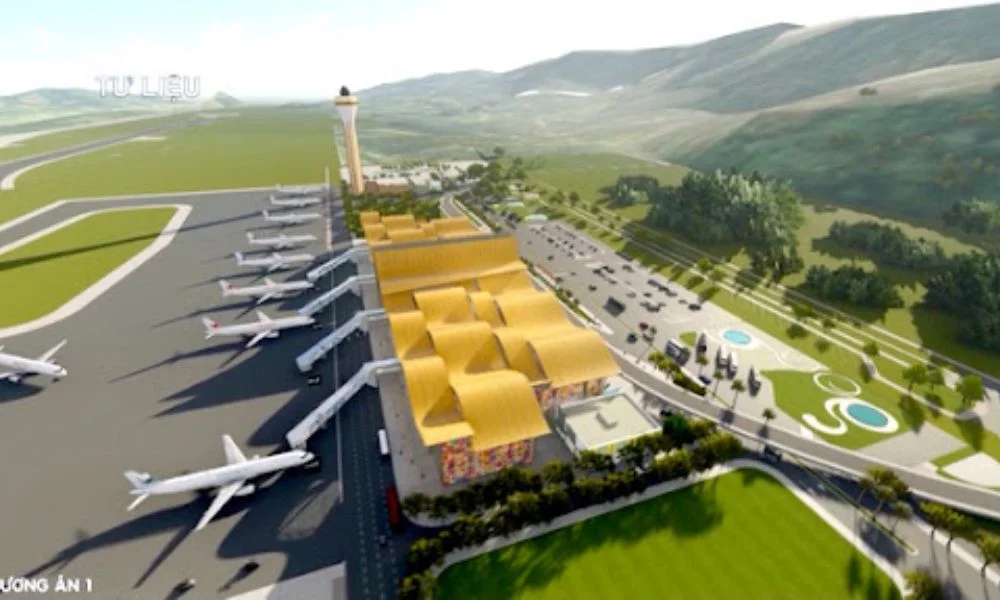
Legacy of Responsible Growth
Crucially, Sapa Airport leaves behind a legacy of responsible growth. Environmental considerations, community engagement, and sustainable practices are not add-ons but integral components woven into its development DNA. The airport becomes a model for future infrastructure projects, demonstrating that progress can coexist harmoniously with environmental stewardship and community well-being.
In the final analysis, Sapa Airport transcends the conventional expectations of an aviation project. It is a manifestation of a vision that envisions a region transformed, lives uplifted, and progress achieved responsibly. As the project propels forward, it carries not just passengers but the aspirations and dreams of a community on the wings of transformation.
FAQs
When is the expected completion date of Sapa Airport?
The first phase of construction is set to begin in Q4/2021, with subsequent phases following. The exact completion date will depend on the progress of each phase.
How will Sapa Airport impact the local economy?
Sapa Airport is expected to have a positive impact on the local economy by boosting tourism, creating jobs, and fostering business opportunities.
What are the environmental measures taken during the construction of Sapa Airport?
Sustainable practices and eco-friendly construction methods are being implemented to minimize the environmental impact of the project.
Is community input being considered in the development of Sapa Airport?
Yes, Sapa Airport actively engages with the local community to gather feedback and address concerns, ensuring that the development aligns with community needs.
How will Sapa Airport enhance regional connectivity?
Sapa Airport, once operational, will serve as a key transportation hub, enhancing connectivity and making the region more accessible for travelers.





